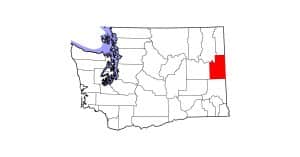Roping Horse Lameness
A study from Texas A&M University (TAMU) on roping horses determined, “Horses used for heading were most commonly affected by lameness in the right forelimb. Horses used for heeling had more bilateral hind limb lameness than horses used
- Topics: Article, Horse Industry News
A study from Texas A&M University (TAMU) on roping horses determined, “Horses used for heading were most commonly affected by lameness in the right forelimb. Horses used for heeling had more bilateral hind limb lameness than horses used for heading.” This study involving 118 Quarter Horses brought to Texas A&M for lameness and/or behavior problems was published in the May 15 edition of the Journal of the American Veterinary Medical Association.
The researchers found the most common musculoskeletal problems in horses used for heading were “signs of pain limited to the distal sesamoid (navicular) area, signs of pain in the navicular area plus osteoarthritis of the distal tarsal (hock) joints, and soft tissue injury in the forelimb proximal phalangeal (pastern) region. Heeling horses most commonly had signs of pain in the navicular area, osteoarthritis of the metatarsophalangeal (hind fetlock) joints, and osteoarthritis of the distal tarsal joints.”
An interesting note in the study was that 25% of the horses were evaluated at TAMU because of owner complaint that the horse had behavioral problems rather than lameness. Of those horses, only four didn’t have lameness when examined.
The researchers noted in their study, “The most common behavioral change reported by owners of horses used for heading was that the horse quit pulling the steer or lunged off-course across the arena while pulling the steer, which are the same changes observed by veterinarians in a previous report
Create a free account with TheHorse.com to view this content.
TheHorse.com is home to thousands of free articles about horse health care. In order to access some of our exclusive free content, you must be signed into TheHorse.com.
Start your free account today!
Already have an account?
and continue reading.

Written by:
Kimberly S. Brown
Related Articles
Stay on top of the most recent Horse Health news with












